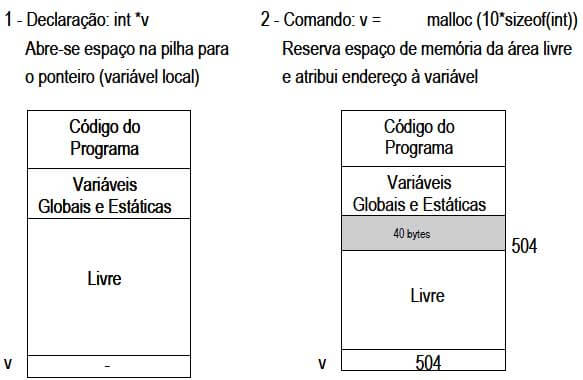There are three ways to reserve memory space for
the storage of information:
Use of global variables – the placeholder exists as long as
the program is running.
Use of local variables – the placeholder only exists
while the function that declared the variable is being
executed.
Reserve a memory space dynamically: request the
system, at runtime, a space of one
certain size.
malloc() // função básica para alocar memória.
The malloc function:
- It receives as a parameter the number of bytes you want to allocate.
- Returns the starting address of the allocated memory area.
Dynamic allocation of an integer vector with 10 elements, example:
int *v; v = malloc (10*4);
If the allocation is successful, ‘v’ will store the starting address of a continuous area of memory sufficient to store 10 integer values.
The sizeof(type) operator returns the number of bytes that a
type occupies in memory.
v = malloc(10*sizeof(int));
Schematic example of what happens in memory:
If there is not enough free space to make the allocation,
the malloc function returns a null address (NULL).
Releasing dynamically allocated space is done by using the ‘free()’ function, which takes the pointer to the memory to be freed as a parameter.
free(v)
OBS:
- We should only pass the free function a memory address that has been dynamically allocated.
- Once the allocated memory space has been freed, it can no longer be accessed.
- As long as the free function is not used, the dynamically allocated space will remain valid even after the end of a given function.



